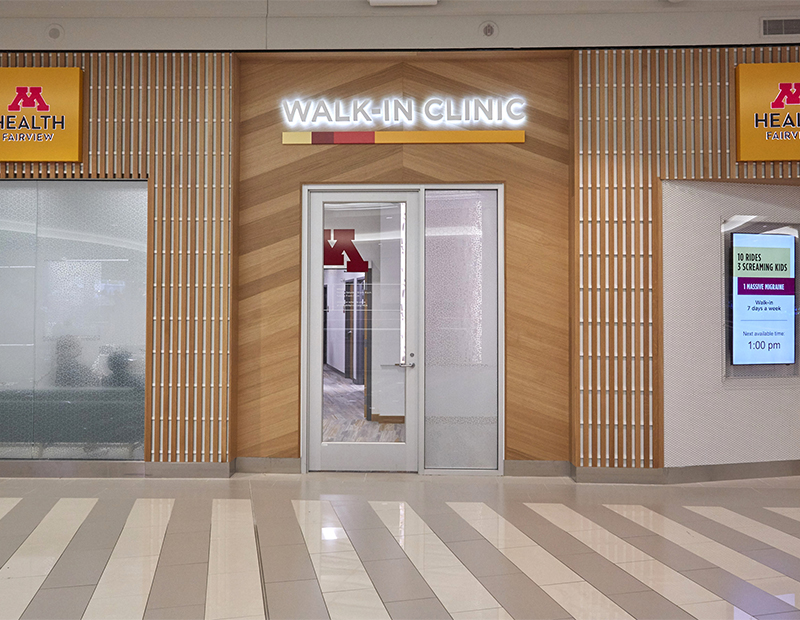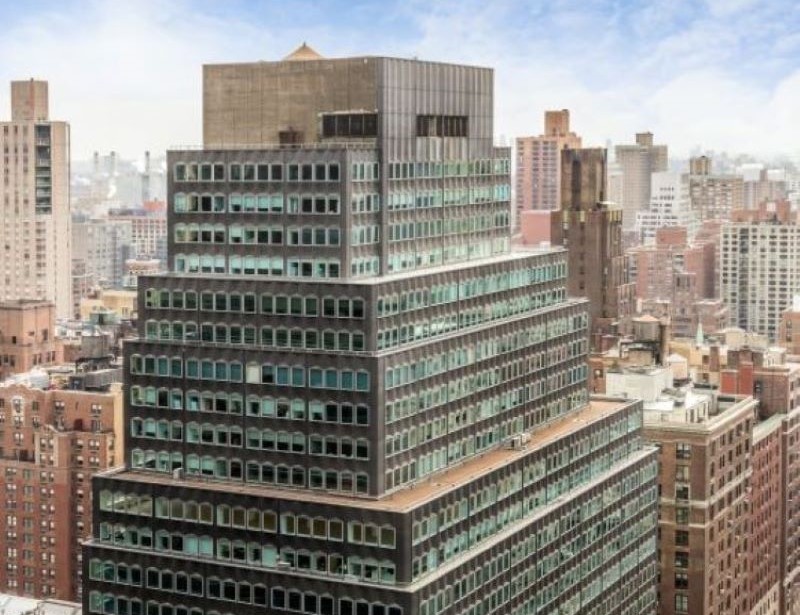Shopping Centers Get Their Share of Medical Tenants
Medical tenants are increasingly going where patients live, so an office at the local shopping center makes perfect sense.
Bolstered by demand for convenient locations, technological advances and need to cut costs, healthcare systems and medical providers are providing more services in outpatient settings. Most are in off-campus medical office buildings, but some are setting up shop in retail centers.

M Health Fairview Walk-in Clinic at the Mall of America includes X-ray equipment, an on-site lab and a pharmacy in a 34,000-square-foot space. It is open seven days a week, and there is reserved parking for clinic patients. Photo by Michael Hicks via Flickr
“Demand for medical office buildings is where the population growth is located and typically where there is a gap in coverage for the patients,” said Christopher Bodnar, CBRE, vice chairman of investment properties, U.S. healthcare capital markets.“The push continues to be on an outpatient basis, and yes, sometimes that does include retail settings.”
Some are opening walk-in clinics in shopping malls, like nonprofit health system M Health Fairview, which opened a 2,300-square-foot space with exam rooms, laboratory testing site, radiology room and pharmacy dispensing services at the Mall of America in July. The Dana-Farber Cancer Institute in Massachusetts is opening a 34,000-square-foot building at Patriot Place, a Foxborough, Mass., retail center, for an outpatient oncology and hematology satellite, later this year. Also in the fall, Dana-Farber will be leasing 140,000 square feet at Life Time Center, the former Atrium Mall in Chestnut Hill, Mass., that has been repurposed as healthcare and wellness center. The facility will be used for clinical trials and support services for adult cancer patients.
“Ten years ago, the thought was the patient will come to us. Now that has reversed and we’re going to the patient,” Bodnar said. Cost can also play a role. Repurposing a retail site rather than building a new MOB or outpatient clinic can be about half the cost in some cases, he said.
George Kimmerle, founding president & partner of Kimmerle Group, an architecture and design company with offices in New York and New Jersey, said his firm has done conversions of retail space into medical facilities in both states. “A big-plate-floor shopping center will work if it has sufficient capacity and parking,” he said.
Traditional MOBs Still Dominate
The more common off-campus MOB is still a two- to three-story building with about 25,000 to 30,000 square feet per floor that are generally leased by a healthcare system, and often feature 18 or more affiliated practices centered around family health, said Kimmerle. The size and scale can vary, but they maximize the number of patients pushed through on a daily basis.
“How we continue to deliver healthcare is going to change very rapidly,” said Danny Prosky, founding principal of American Healthcare Investors in Irvine, Calif., a co-sponsor of Griffin-American Healthcare REIT III and Griffin-American Healthcare REIT IV. Prosky said more physicians are becoming healthcare system employees as the move from inpatient to outpatient services continues, with an increasing amount of medical services and procedures performed at MOBs. He noted there tends to be significant pre-leasing before construction begins on MOBs.
But Prosky, who expects another strong year for AHI acquisitions, doesn’t expect the MOBs to be emptied out with a move to shopping centers.
“There will probably be more retail locations, but I don’t think that comes at the expense of the freestanding MOBs,” Prosky said.
Alan Pontius, senior vice president & national director of specialty divisions at Marcus & Millichap, agrees. “I still think medical assets intended as medical assets are absolutely in higher demand than retail centers that have been augmented by medical tenants.”
Part of keeping up with patient demands is “looking at newer, modern facilities so that the patient experience is as good as possible, so you can capture market share,” Pontius added.
Sector Insights rotates among office/medical office, industrial, retail, multifamily, self storage and hotel/hospitality.








You must be logged in to post a comment.